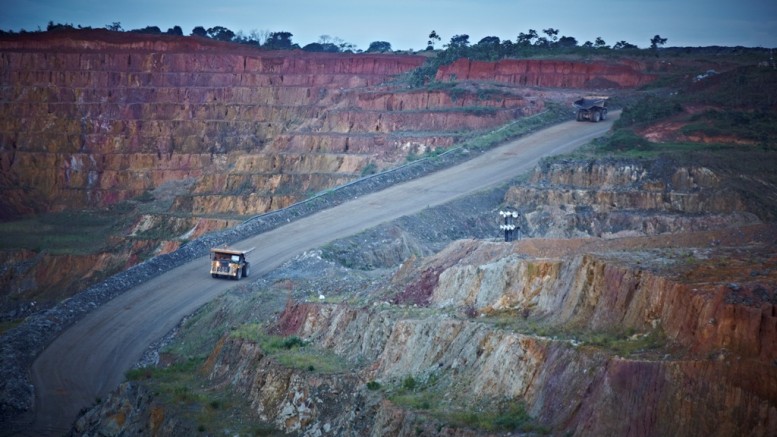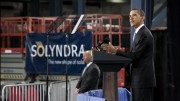The 2011–2016 metals bear market marked a historic inflection point for the mining industry.
With a market capitalization erosion exceeding hundreds of billions of dollars, the focus shifted from maximizing tonnes mined and processed to reducing all-in sustaining costs (AISC) and optimizing free cash flow. Over the past five years, I have noticed firsthand how companies collaborate for the betterment of the industry. There have been more joint ventures, and more importantly, a greater effort to work together to decrease costs and improve efficiencies.
Until now, there have been limited ways for mining companies to compare their mine site costs to those of their peers. They could contact other companies with questions, or they could study publicly available operating and financial information.
The first option worked, but required time and effort to build the trusting relationships needed to share information.
The second option worked as well, but there were too many hidden costs that prevented accurate analyses and comparisons. The industry needed a benchmarking platform to share detailed mine site information in a controlled environment. There was not a good reason as to why such a platform did not exist.
We were not talking about pharmaceutical and technology industries, for example, which protect intellectual property and keep revolutionary technologies under wraps for competitive reasons.
Three years ago, in the midst of a major cost-reduction program, our board of directors at Iamgold — in particular Bob Dengler and Guy Dufresne — asked whether we could compare our mine site costs to those of other companies.
Having come from the oil and gas industry, where benchmarking performance was commonplace, I thought there should be an affordable way for companies to routinely compare granular mine site costs to those of their peers. The best we could do was make high-level cost comparisons, AISC per ounce included, and even then, we were not always comparing apples to apples.
So Iamgold decided it was time to do something. We initiated a study and engaged a consulting firm who enlisted support from other companies, so that we could increase the mine sites in benchmarking analytics.
Using a third party helped each company maintain anonymity when sharing data with the group.
Although this study was beneficial, we didn’t achieve our objective, as it only provided a snapshot of the benchmarked key performance indicators (KPIs). In other words, it would not provide us with “living” reports. In addition, ensuring the consistency of data between different companies proved challenging.
After assessing the results and realizing the flaws, the project stalled.
One of our employees, with previous experience working at site in the area of performance optimization, examined the data from the study and saw the benefits of continuing with this initiative, but with a different approach. This time we engaged a data services company that was a strong proponent of performance benchmarking, and claimed to have the technology and expertise necessary to achieve our objective.
Six companies
For two years we collaborated with six other gold mining companies. Unlike the first iteration, which provided only snapshots of KPIs at a certain point in time, the second iteration provided granular cost comparisons on a quarterly basis. This helped us build cost curves, so that from one period to the next we could address issues that affect efficiencies and costs.
As we moved the project forward, the benefits began to unfold. The anonymous environment prevented the creation of silos and controlled performance-metric sharing. With the relationships created by the benchmarking project, we obtained data from mine sites like ours. Instead of waiting weeks or months for data, it took only a few days to get the information we needed. Using the data collected, we improved working capital management and lowered general and administrative costs at our mine sites. And using data that analyzed labour and reagent costs, we improved processes and further lowered costs.
Although the second iteration of the project was more successful than the first, we still lacked the ability to see detailed mine site data for the peer group in real time, and we needed to have more companies involved with the project.
After a three-year learning curve, we have found a groundbreaking solution for the mining industry: London-based company MiTRAQ, a partner that can broaden participation in the benchmarking program, and expand technology.
MiTRAQ’s technology platform shares meaningful information without compromising confidentiality and security.
The results have been exceptional. The cost benchmarking program created by MiTRAQ and a group of Canadian precious metals mining companies is confidential, centralized, routine and affordable. On an annual basis, it costs less than a haul truck tire. And we could eventually provide participating companies with a secure, live benchmarking platform.
MiTRAQ organizes and maintains a database of agreed-upon KPIs for each of the participating mining companies, segregated by operation. The premise is that company information will stay confidential on a military-grade, secure private cloud. Companies will see their own mine data, while the mine data of their peers will remain confidential.
This will help companies see how their mines do against others without compromising the confidentiality of specific mine information.
With a “private cloud,” companies can rank their mine costs to their peers. But data for a company’s mines will be strictly confidential to that company, and data will not be provided to anyone outside the cloud.
Mining companies looking at the data could filter the comparator set of peer data to refine the analysis, providing there are enough peer operations available to preserve anonymity. The first phase focuses on a smaller set of higher-level KPIs to prove the concept. The second phase will expand and deepen the level of KPIs used.
The periodic data upload process — which is initially done on a quarterly basis — will be a simple exercise for each of the participating entities, which lowers system overhead. MiTRAQ and mining companies are working together to enhance the process, so that data can be retrieved in real time.
While this is a precious metals mining industry project, Iamgold has overseen the project since inception. Iamgold’s board is fully supportive, because it has a proactive approach to managing and lowering site costs.
Throughout our industry, efforts to control costs and improve efficiencies at site level are ongoing. There is an opportunity to enhance the mining culture in a way that helps share information between companies, while respecting data security and disclosure concerns.
So far, I am inspired by how well the current group of mining companies have collaborated to improve the efficiency of their operations.
MiTRAQ could become an industry staple. After a year of testing, the benchmarking project is ready to be marketed to mining companies around the world. Designed by miners for miners with no other purpose than to help mining companies target their inefficiencies and improve operations, it would benefit the precious metals industry tremendously if all companies were to join the program.
Lowering costs and improving efficiencies is an ongoing process, not a single event, and this benchmarking initiative is the linchpin to get us to the next level.
 — Stephen J.J. Letwin has been president and CEO of Toronto-based gold miner IAMGOLD since 2010. Prior to joining Iamgold, he held senior positions at Enbridge, TransCanada Energy, TransCanada Pipelines, Numac (Westcoast Energy), and Encor Energy. He holds an MBA from the University of Windsor, is a Certified General Accountant, a graduate of McMaster University (B.Sc., Honors), and a graduate of the Harvard Advanced Management Program.
— Stephen J.J. Letwin has been president and CEO of Toronto-based gold miner IAMGOLD since 2010. Prior to joining Iamgold, he held senior positions at Enbridge, TransCanada Energy, TransCanada Pipelines, Numac (Westcoast Energy), and Encor Energy. He holds an MBA from the University of Windsor, is a Certified General Accountant, a graduate of McMaster University (B.Sc., Honors), and a graduate of the Harvard Advanced Management Program.
For more information on the benchmarking program, please contact: Anthony Moreau, CFA, Special Projects & Innovation Manager at IAMGOLD, at tel. 1-416-594-2879 and Anthony_Moreau@IAMGOLD.com.




Be the first to comment on "Commentary: Creating a benchmarking program for precious metals miners"